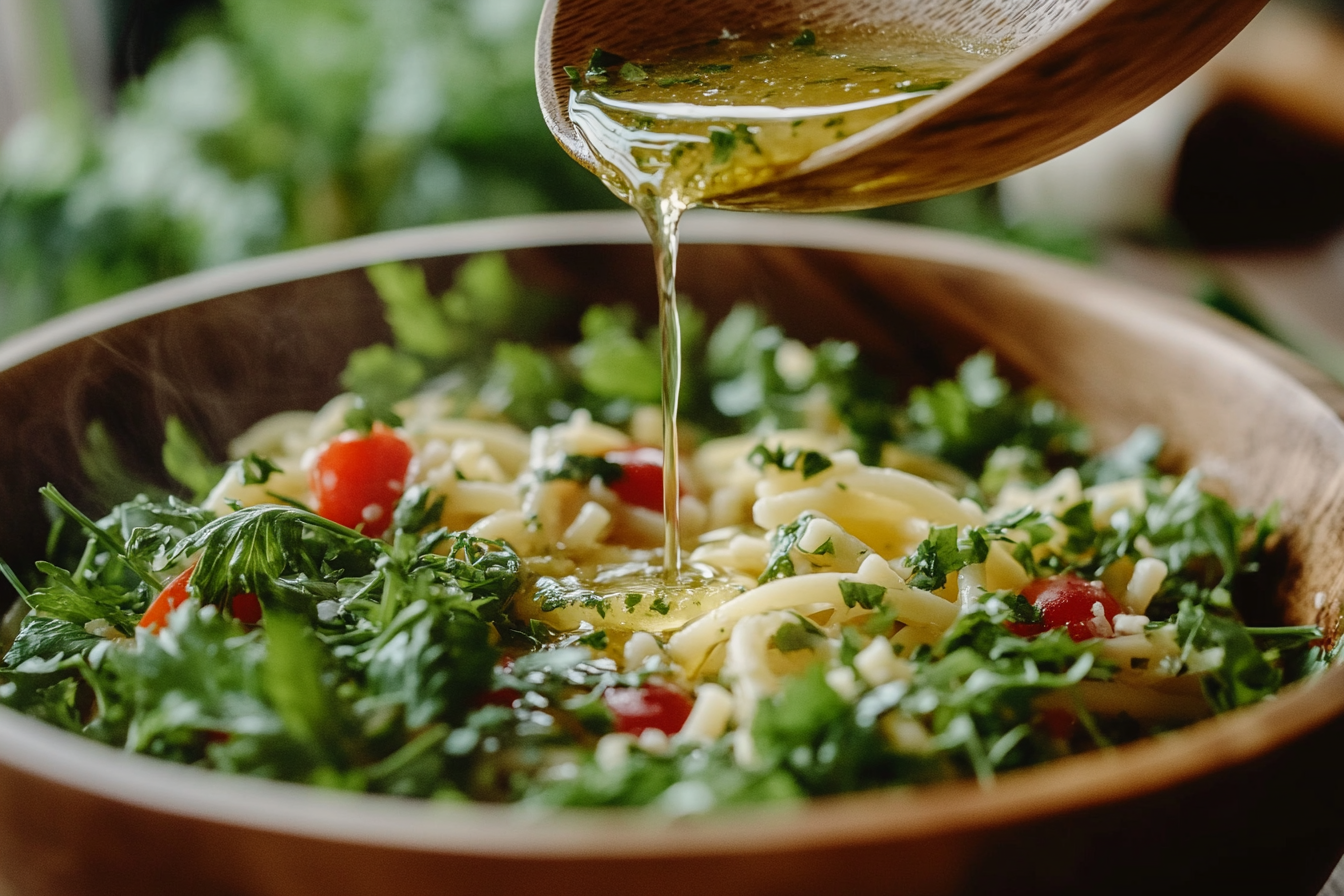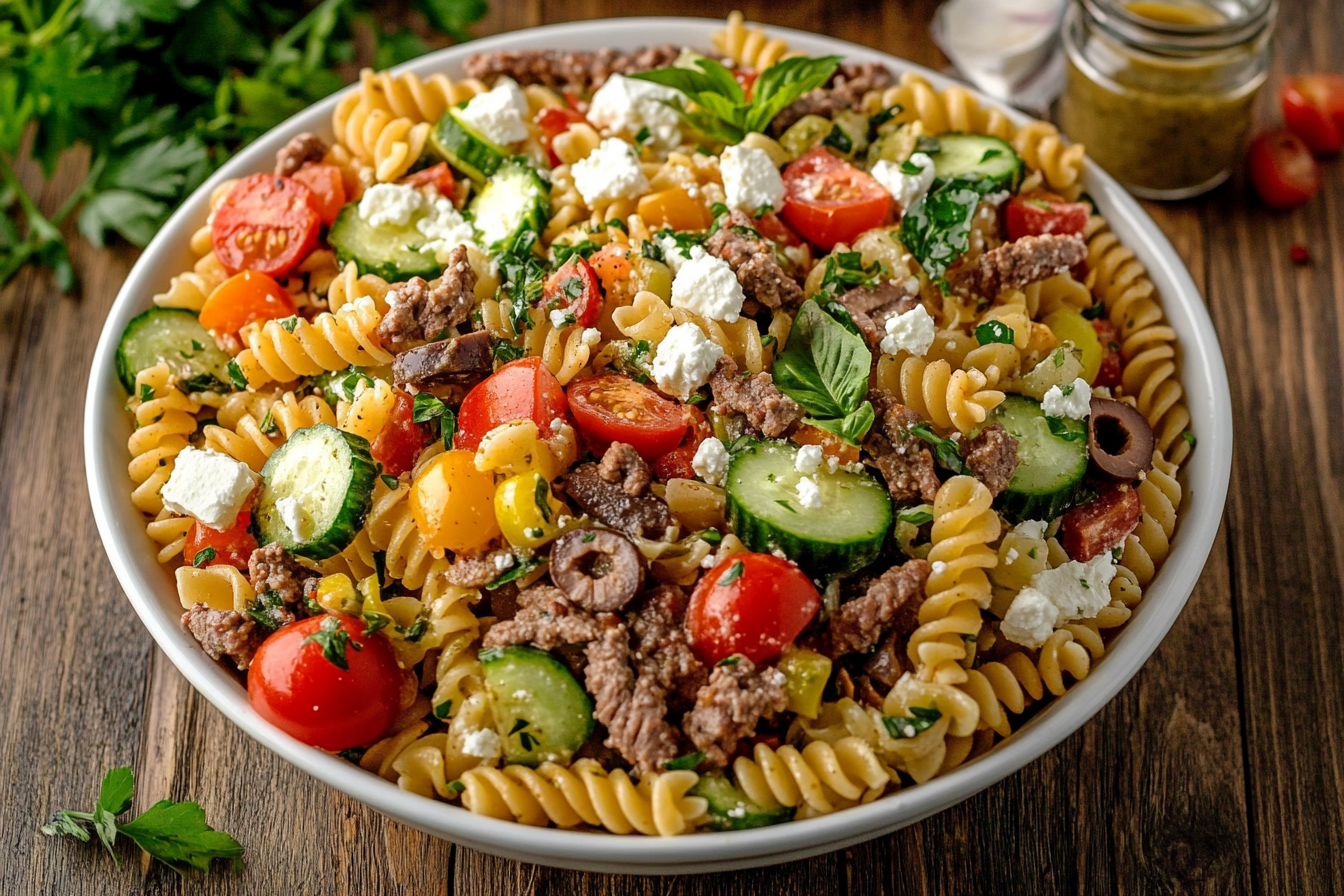Pasta salad is a beloved dish worldwide, renowned for its versatility, ease of preparation, and endless customization options. Whether it’s a staple at summer picnics or a quick meal prep option, pasta salad can be both satisfying and nutritious. However, there are several common pitfalls that can turn this delightful dish into a culinary disappointment. In this article, we’ll dive into the five most common mistakes to avoid when making pasta salad and how to fix them, ensuring your salad always turns out perfect.
Pasta salad might seem simple at first glance, but creating a truly exceptional dish requires attention to detail. From selecting the right type of pasta to balancing flavors and textures, each step plays a crucial role. Unfortunately, many cooks encounter problems that leave their pasta salads mushy, bland, or overly heavy. By identifying and addressing these mistakes, you can elevate your pasta salad from mediocre to magnificent.
Mistake 1: Overcooking or Undercooking the Pasta
One of the most crucial steps in preparing a pasta salad is cooking the pasta to perfection. The texture of your pasta forms the foundation of the entire dish, and getting it wrong can make or break the recipe. Overcooked pasta becomes mushy and unpleasant, while undercooked pasta is tough and unappetizing.
Overcooked Pasta: Why It’s a Problem
When pasta is overcooked, it absorbs too much water and loses its structure. This can lead to a soggy salad where the pasta disintegrates as you mix in the ingredients. Overcooked pasta is also more likely to stick together, creating clumps that make for an unappealing presentation and eating experience.
Undercooked Pasta: Why It’s Unpleasant
On the other hand, undercooked pasta is too firm, making it difficult to chew and less enjoyable to eat. It also fails to absorb the dressing properly, resulting in a salad that lacks flavor cohesion. No one wants a pasta salad where the pasta feels underdone compared to the rest of the dish.
Tips for Cooking Pasta Perfectly for Salads
To achieve the perfect texture for pasta salad:
- Follow the Package Instructions: Use the cooking time as a guideline but taste-test the pasta a minute or two before it’s done.
- Cook to Al Dente: Aim for pasta that is tender but still slightly firm to the bite. This texture holds up well when mixed with other ingredients.
- Salt the Water Generously: This enhances the flavor of the pasta, as it will not absorb seasoning later.
- Test Frequently: Avoid relying solely on a timer—taste is the best indicator of doneness.
By cooking your pasta just right, you’ll set a solid foundation for a pasta salad that shines.
Mistake 2: Using the Wrong Type of Pasta
Not all pasta is created equal, especially when it comes to pasta salad. Choosing the right type of pasta can significantly affect the salad’s texture, flavor, and overall success.
Ideal Pasta Shapes for Salads
Short, sturdy shapes such as rotini, penne, farfalle, and fusilli work best for pasta salads. These shapes have ridges, twists, or pockets that can hold onto dressings and other ingredients, ensuring that every bite is flavorful.
Why Long Pasta is Less Suitable
Long, thin pasta like spaghetti or linguine is challenging to eat in a salad format and doesn’t mix well with other ingredients. It also tends to clump together, leaving parts of the dish underdressed and others overly saturated.
Factors to Consider When Choosing Pasta
When selecting pasta for your salad, consider the following:
- Size: Smaller shapes mix better with chopped vegetables, proteins, and other add-ins.
- Texture: Opt for pasta with grooves or holes to help the dressing adhere evenly.
- Durability: Pick pasta that holds its shape and doesn’t break apart easily during mixing.
Making the right pasta choice will ensure your salad is cohesive, well-balanced, and a joy to eat.
Mistake 3: Skipping the Pasta Rinse
One of the most debated steps in pasta preparation is whether or not to rinse it after cooking. For pasta salad, rinsing is not optional—it’s an essential step that significantly impacts the dish’s texture, flavor, and overall quality.
Why Rinsing Pasta is Critical
When pasta is cooked, its surface is coated with starch. While this starch is beneficial for hot pasta dishes where sauces need to cling, it can lead to clumping in pasta salads. Skipping the rinse will result in a sticky texture that hinders even mixing and dressing absorption.
Additionally, rinsing cools the pasta immediately, stopping the cooking process. This ensures the pasta remains al dente and prevents it from becoming overly soft as it cools naturally.
How to Properly Rinse Pasta After Cooking
- Use Cold Water: Transfer the pasta into a colander and rinse under cold running water. This rapidly cools the pasta and removes the excess starch.
- Toss While Rinsing: Gently toss the pasta with your hands or a spoon to ensure all pieces are evenly rinsed.
- Drain Thoroughly: After rinsing, let the pasta sit in the colander for a few minutes to remove excess water. Wet pasta can dilute your dressing and result in a watery salad.
By taking the time to rinse your pasta, you’ll create a base that’s cool, non-sticky, and ready to soak up the delicious flavors of your chosen dressing.
Mistake 4: Not Balancing the Ingredients
A perfect pasta salad is all about harmony. An imbalance of ingredients can lead to a dish that is either overwhelmingly rich or disappointingly bland. Getting the ratios right is crucial to achieving a salad that’s flavorful, diverse, and enjoyable.
Too Many Ingredients: Overwhelming the Flavor
Including too many components in your pasta salad can muddle the flavors and make the dish feel chaotic. Overloading the salad with a wide variety of ingredients also makes it harder to ensure every bite is balanced.
For example, adding too many salty ingredients like olives, cheese, or cured meats can overpower the dish and mask the subtle flavors of the dressing and vegetables.
Too Few Ingredients: A Lackluster Salad
Conversely, skimping on ingredients can result in a salad that feels one-dimensional and uninteresting. Without enough variety in textures and flavors, your pasta salad may lack the complexity that makes it a crowd-pleaser.
Tips for Achieving the Right Balance
- Choose a Theme: Whether it’s Mediterranean, Italian, or Asian-inspired, decide on a flavor profile to guide your ingredient choices.
- Follow the 3:1 Ratio: Use three parts pasta to one part add-ins (vegetables, proteins, cheeses, etc.) to avoid overcrowding the dish.
- Incorporate Contrast: Balance soft ingredients like cheese with crunchy vegetables, and mix sweet flavors like dried fruits with savory ones.
- Taste as You Go: Periodically taste the salad during assembly to ensure the flavors complement each other.
Balancing your ingredients ensures that every forkful is as enjoyable and satisfying as the last.
Mistake 5: Using the Wrong Dressing or Adding it Incorrectly
The dressing ties all the ingredients together, making it one of the most important elements of a pasta salad. Using the wrong dressing or applying it incorrectly can result in a dish that feels disjointed or heavy.
Choosing the Right Dressing for Pasta Salad
A great pasta salad dressing enhances the flavors of the ingredients without overpowering them. Here are some popular options:
- Vinaigrettes: Light and tangy, these are ideal for Mediterranean or vegetable-heavy salads.
- Creamy Dressings: Made with mayonnaise, yogurt, or sour cream, these work well with hearty, protein-rich salads.
- Oil-Based Dressings: Olive oil-based dressings infused with herbs add a subtle richness without weighing down the dish.
Avoid using overly sweet or overly acidic dressings, as they can clash with savory ingredients.
Timing: When to Add Dressing
Adding dressing at the wrong time can lead to disappointing results. To ensure maximum flavor:
- Dress While Warm: Toss the pasta with a small amount of dressing while it’s still slightly warm to allow absorption.
- Add More Later: Mix in the bulk of the dressing just before serving to avoid sogginess and ensure even coating.
How to Ensure Even Coating
To prevent uneven distribution of dressing:
- Toss Gradually: Add the dressing in increments, tossing after each addition.
- Use Tools: A large mixing bowl and utensils can help you toss ingredients more thoroughly.
- Don’t Forget the Edges: Scrape down the sides of the bowl to ensure all ingredients are coated.
With the right dressing applied at the right time, your pasta salad will be flavorful, cohesive, and irresistible.

FAQs
What is the best way to store pasta salad?
Store pasta salad in an airtight container in the refrigerator. To keep it fresh, avoid adding the final round of dressing until just before serving. This prevents the salad from becoming overly soggy during storage.
How can I prevent my salad from getting soggy?
Ensure the pasta is properly drained after rinsing and use just enough dressing to coat the ingredients lightly. Adding crunchy vegetables like bell peppers and celery also helps maintain a crisp texture.
Can I make pasta salad ahead of time?
Yes, pasta salad can be made ahead of time, but it’s best to add the final dressing and delicate ingredients like herbs or cheese just before serving to maintain freshness.
Is it okay to use bottled dressings for pasta salads?
Bottled dressings can be a convenient option, but consider enhancing them with fresh herbs, spices, or a splash of citrus to add a homemade touch.
What are some creative ingredient ideas for pasta salad?
Try adding roasted vegetables, marinated artichokes, sun-dried tomatoes, or nuts like almonds and pine nuts for added flavor and texture.
Conclusion
By avoiding these five common mistakes—overcooking or undercooking pasta, choosing the wrong type of pasta, skipping the rinse, not balancing ingredients, and mishandling the dressing—you can create a pasta salad that is flavorful, balanced, and utterly delicious. Whether you’re preparing it for a casual meal or a special event, mastering these tips will make your pasta salad the star of the table every time. Happy cooking!

